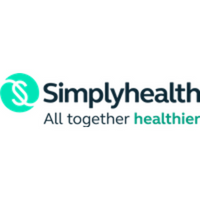How to improve take-up of mental wellbeing benefits and demonstrate return on investment

Tailor your benefit offering and comms
To ensure your communications resonate with your employees, you need a good understanding of who they are. First, think about what your employees do. If they have desk jobs then emails and intranet content can work well, but if they are predominantly on the road they will never see these communications, so consider producing marketing literature to keep them informed.
Age may also be a factor to consider. Although it’s important not to generalise, older employees may prefer a more traditional approach, while younger ones will probably expect you to use more technology in your communications, in keeping with the consumer brands they prefer. This is also a useful consideration when looking at what services you can provide, a mix of online options as well as face to face methods can ensure you’re helping everyone have a service they’re comfortable accessing.
Communicate regularly and effectively
Once you have wellbeing benefits in place it’s essential to maintain communication. There are several ways to promote your wellbeing services and how to access them, including email, business communications, marketing materials such as posters and desk drops, or through conversations during meetings and check ins with managers. Don’t be afraid to try something unconventional and eye-catching. Static flyers or posters can become hard to notice as time goes by, so consider alternatives like floor stickers or materials available in break-out areas and toilet facilities.
The right tools for the right people
Make use of your people. Equipping managers with the right tools to have difficult conversations and signpost employees to services or advice can be invaluable, as they’re often the first person an employee will come to regarding an issue. Training mental health first aiders can also provide a more secure way to reach out, as well as providing a more personal option for those who don’t wish to use a tech-based service.
Explore the link between wellbeing and good business
Deciding on the KPIs – such as take-up numbers, employee engagement surveys, reduced absenteeism, or increased productivity will enable you to measure success in a way that links back to business performance. Taking the time to measure practices such as ‘presenteeism’ or ‘leavism’ when they use annual leave or time outside of work to continue working, will also help in quantifying the success of your strategy.
Decide on measurement periods and create benchmarks beforehand to allow you to measure the impact of your benefits, then assess the selected KPIs and share them with management to highlight changes to performance.
What next?
Take the time to understand your workforce, their needs and their preferences, this is essential in ensuring they engage with communications and the benefits on offer. Identify KPIs and link them to your business performance to allow you to measure success and ROI, while taking the time to get regular feedback from your employees, which will aid you in creating plans to maintain momentum and engagement.
This article is provided by Simplyhealth.
Supplied by REBA Associate Member, Simplyhealth
Our health plans make it easy for people to maintain their health&wellbeing.







